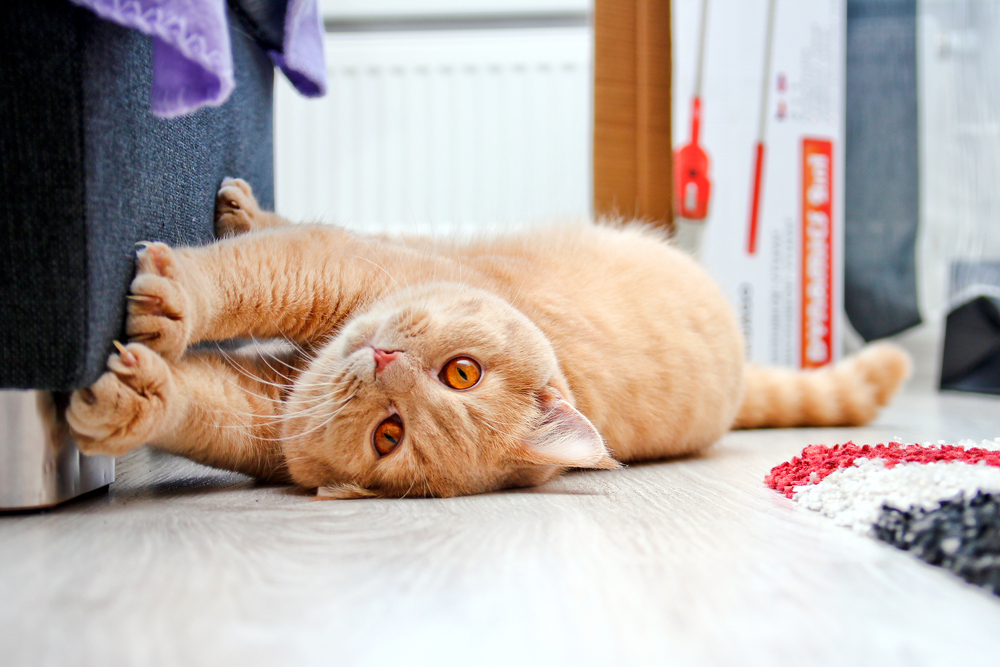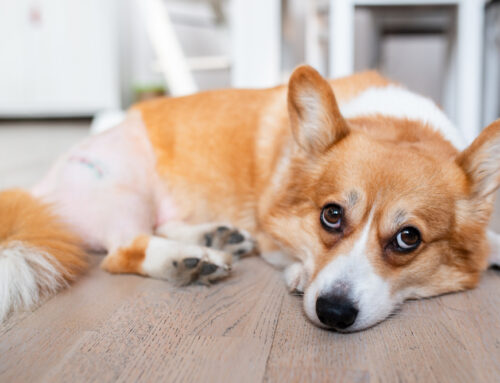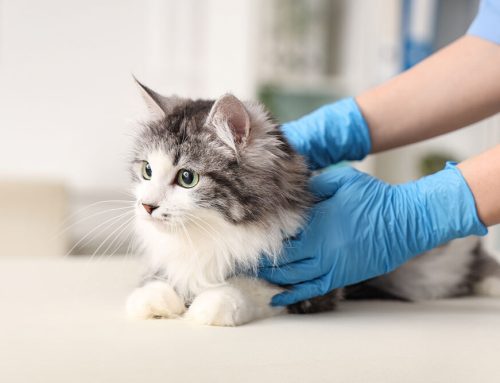Cats need to scratch to remain happy and healthy, but the behavior can be destructive and cause tension in your home. Our Homestead Animal Hospital team understands your frustration when your cat claws your belongings, so we are offering information that will help you understand your cat’s scratching behavior, plus tips to get them to scratch appropriately.
Why do cats scratch?
Scratching is an instinctual behavior that provides many benefits for cats, including:
- Claw health — Scratching helps your cat shed loose, dead layers from their claws, which keeps them healthy and sharp.
- Exercise and stretching — Scratching helps exercise and stretch your cat’s paws, forelimbs, and spine to keep them fit and healthy.
- Scent marking — Cats have scent glands in their paws, and they communicate to other cats and determine rank by leaving scent marks where they scratch.
- Stress reduction — Many stressed cats scratch, possibly to self-soothe.
- Combating boredom — Cats who aren’t adequately mentally enriched commonly scratch inappropriately.
How can I stop my cat from scratching?
Scratching is important for your cat’s physical and mental health, and expecting them to stop scratching is impractical and unfair. However, although you cannot prevent your cat from scratching, you can direct their scratching to appropriate surfaces. First, you must understand their motivation. Considerations include:
- Physical exercise — Wild cats spend a lot of time hunting prey, and indoor cats can easily get bored. Ensure your cat exercises daily to stay fit, stimulated, and healthy. Schedule at least 15 minutes twice a day to play with your pet. Laser pointers and wand style toys are great tools to get your cat moving.
- Mental stimulation — Cats also need mental stimulation to prevent boredom. If possible, feed your cat several times a day, using a food puzzle toy. In addition, rotate their toys to ensure they remain engaged, or find online videos specifically made to entertain cats.
- Anxiety level — Assess your cat’s situation. You may think your home is peaceful, but many cats are extremely sensitive to changes in their environment. A new household pet, changing homes, construction in or around your home, changes in the household routine (e.g., when the school year starts), and houseguests, can stress your cat and lead to unwanted behavior, including scratching. Cats in multi-cat households are more likely to exhibit anxiety-related behaviors.
- Territorial instincts — Cats who scratch only new furniture or objects may be marking their new territory. Cats may also feel the need to re-mark territory when a new person or pet enters the house.
- Medical condition — If your cat’s scratching is associated with other signs, such as hiding more frequently, lethargy, decreased appetite, or social behavior changes, you should consult our veterinary professionals to ensure they are not affected by a medical condition.
How can I stop my cat from scratching inappropriately?

Inappropriate scratching won’t stop unless your cat has access to an alternative scratching surface. Tips include:
- Provide scratching options — Provide several scratching posts throughout your home, so your cat can scratch conveniently and comfortably.
- Determine your cat’s scratching preference — Cats who tend to scratch furniture and drapes usually prefer vertical surfaces, and those who tend to scratch carpet most often like horizontal surfaces. Observe your cat to determine their scratching preference, or place several options throughout your home.
- Choose an appropriate scratching material — Commercial posts are covered in many materials. Good options include cardboard, carpet, wood, and sisal.
- Make the scratching post desirable — Tempt your cat with catnip, treats, or their favorite toys placed on the post. Some pheromone products may also help direct your cat’s scratching from undesirable objects to their post. Ask our team if these products are right for your cat.
- Make inappropriate scratching unpleasant — If your cat routinely scratches a particular surface, make that area unpleasant. Cover the area with aluminum foil, bubble wrap, or double sided tape, add obstacles, or clap your hands when your cat attempts to scratch.
- Never discipline your cat — Never yell at or strike your cat for inappropriate scratching, which will increase their anxiety and may make the behavior worse.
- Don’t throw away your cat’s favorite scratcher — Your cat’s favorite scratching post may look ragged and unsightly, but don’t replace it. Cats prefer shredded scratching areas, and they are comforted by the smell.
Should I declaw my cat?
In 2019, New York became the first state to ban cat declaws, but some owners consider taking their cat out of state for the procedure. Declawing, or onychectomy, involves amputating the last digital bone, including the nail bed and claw, on every front toe. The procedure is strongly discouraged by the American Veterinary Medical Association (AVMA) and the American Society for the Prevention of Cruelty to Animals (ASPCA) for reasons that include:
- Pain — The surgery is painful, and phantom pain may continue for weeks or months as the nerves heal.
- Behavior — Declawing may lead to other behavioral issues, such as inappropriate elimination outside the litter box.
- Emotion — Declawed cats still need to scratch, and they may become frustrated and depressed, and develop emotional and mental health issues.
- Discomfort — The surgery changes the way cats walk, and may lead to arthritis in their limbs and spine, causing pain and mobility difficulties.
What are declawing alternatives for my cat?
Ensuring your cat is happy with their scratching post choices is the best alternative. Others include:
- Trimming your cat’s claws — Regular nail trimming can keep your cat’s claws dull and help prevent excessive damage to your belongings. Most cats need their claws trimmed every 10 to 14 days.
- Covering your cat’s claws — Commercial products that cover your cat’s nails are also available. The soft plastic caps that are glued to your cat’s clipped claw typically last about 6 to 12 weeks.
If you need help trimming your cat’s claws, or more advice to help your cat stop scratching inappropriately, contact our Homestead Animal Hospital team, so we can help wrangle your ferocious feline friend and save your belongings.
















Leave A Comment